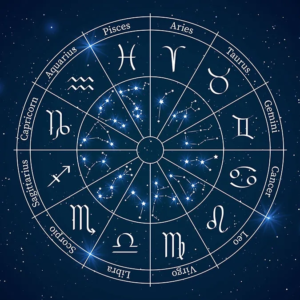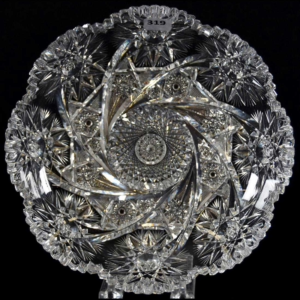Ivory Stone – properties, virtues & benefits
Ivory Stone is a natural white stone known for its purifying properties, its connection with sPirituality and its association with the crown chakra. It is linked to the planet Neptune and the astrological sign Pisces, and has been used for centuries to promote mental clarity and connection with the divine. Ivory Stone has a hardness of 2 to 2.5 on the Mohs scale and is mainly composed of calcium carbonate (CaCO3). It is often associated with the gods Apollo and Vishnu.
CHARACTERISTICS OF IVORY
- Chakra: Crown.
- Properties: Purification, mental clarity, sPiritual connection.
- Astrology: Neptune.
- Zodiac: Pisces.
- Elements: Water.
- Colors: White, translucent.
- Hardness: 2-2.5 on the Mohs scale.
- Chemical Formula: Calcium carbonate CaCO3.
- Associated god: Apollo, Vishnu.
IVOIRE – HIS HISTORY
Ivory stone is widely known, not least because of the poaching that threatens it. Animals such as elephants, hippos, mammoths, narwhals and walruses are killed for their raw material, which is then sold illegally on the black market. This lucrative activity is known as “ivory trafficking”, and is endangering the elephant population. The trade in this material has been going on for centuries, and even affects remote regions such as Siberia and Greenland. The animals are in danger of extinction as a result, and many countries have banned the sale of ivory. Although ivory stone is used in many everyday objects, such as Piano keys, efforts are being made to limit its use and protect the animals. Both species of African elephant are currently classified as “endangered” and “vulnerable” by the Union, which deals with nature conservation.
.
For centuries, the Asian and African continents have been the main exporters of Ivory stone. In the 14th century BC, entire carts were used to transport the raw material. During the colonial period, slaves were employed to transport the stone under inhumane conditions. Stone’s uses were varied, including Piano keys and billiard balls. In the West, stone represented refinement and exoticism. 1,000 years ago, the North African elephant disappeared due to intensive poaching. By the 20th century, the elephant had completely disappeared from Southern and West Africa. During the colonial period, around 1,000 tonnes of ivory were shipped to Europe every year. Exports slowed down due to wars and economic depressions, but since the 1970s, poachers have been making a comeback. After the Second World War, Japan purchased large quantities of raw material to build up a national reserve, increasing pressure on elephant populations in Africa and Asia. Thousands of elephants were killed to make seals, correspondence, prints and hankos in Japan.
In 2015, the Save the Elephants association highlighted Hong Kong’s role in the illegal trade in Ivory stone, which passed through the city on its way to Japan and China. The city even boasts a large ivory sculpture. Around 70% of the world’s ivory imports pass from Africa to China. However, China has begun to take steps to close down markets and companies involved in the illegal trade. In 2017, WWF published an investigation revealing names of accomplices in the illegal trade, forcing Hong Kong to take urgent action to stop it.
In Kenya, the maximum stock of Ivory stone was exhausted in April 2016, with a total of 105 tons mined. It is estimated that there are still around 600 tonnes of ivory left on the entire African continent, but many countries are seeking to ban it to protect the animals. Since 2016, the sale of ivory has been formally banned in the United States, and since early 2021 it has also been banned in Hong Kong. China has also pledged to follow suit in the coming years, although no precise date has been set. In France, the decree of August 16, 2016 formally bans the sale and purchase of ivory, except for worked objects dating from before 1975 and the signing of the Washington Convention.
IVORY STONE – ITS ORIGIN AND COMPOSITION
Ivory stone is characterized by its white, opaque and hard substance, which can be found in the tusks of animals such as sperm whales, elephants and warthogs. In France, the term “ivory” is also applied to mammoth tusks. In prehistoric times, ivory stone was cut and sculpted by man and used to replace plastic, which did not yet exist. It can still be found on fans, cutlery handles, buttons and book bindings from this period. The chemical composition of Ivory stone is similar to that of our teeth and animal tusks, as it contains dentine and is the result of mineralization. However, elephant horn contains no enamel unlike teeth.
The wood has a structure similar to that of Ivory stone and can be obtained by taking the material from a dead elephant. The wood will dry and contract naturally, or swell if stored in a damp environment. When stone is dry, it can be brittle due to its fibers. Gradual mineralization is instantly visible on animal tusks, and the various stages in the formation of an Ivory stone are visible to the naked eye. It’s even possible to determine the age of the elephant to which the tusk belonged by examining the stone.
The term “ivory” is generally used to refer to the teeth and tusks of different animals, but the larger the animal’s horn, the more it is hunted and the higher the material’s commercial value. Teeth are used to chew food, while tusks give animals an evolutionary advantage by being located above their lip and containing a root. If a tusk is torn off while the animal is alive, it can cause significant blood loss. Teeth are composed of enamel, cementum, dentin and pulp, while tusks are hollow on the inside, and dentin gives them their hardness. The weight of an elephant tusk generally varies between 25 and 120 kilograms, depending on the age, sex and origin of the animal.
Jewelers can cut Ivory stone to suit their needs, which explains its presence in objects such as statues, jewelry, furniture and plates. Its white color is unique in the world, and the material can be hollowed out when taken from certain animals.

IVORY STONE – VERTIES AND PROPERTIES
Ivory stone is a raw material rich in calcium, which is beneficial for strengthening tooth enamel and bone strength. It also promotes the creation of red blood cells, which can relieve certain ailments such as circulation disorders and boost immune defenses. On a sPiritual level, Ivory encourages self-sacrifice to reach parallel worlds and helps the body assimilate magnesium, protein and calcium. It also combats frustration and boredom.
To recharge the stone, we recommend placing it on a quartz cluster or amethyst druse for several hours, then placing it on the joints to regenerate tissue and ease bone pain. The mineral aligns the various energetic, sPiritual and emotional bodies. Although Ivory Stone can be found in animals, it’s important to care for it as long and as often as possible if you own it. If you don’t, we strongly advise against acquiring it for ethical reasons.

IVORY STONE – CLEAN AND RECHARGE
As with all natural stones, regular cleaning and recharging of Ivory Stone is recommended to maintain its energetic properties. Here are some common methods for doing so:
- Cleaning: to clean the Ivory Stone, you can rinse it under running water for a few minutes or place it in a bowl of salt water for a few hours. You can also clean it by gently rubbing it with a soft cloth.
- Recharging: to recharge the Ivory Stone, you can place it on a cluster of crystals, such as an amethyst geode, for several hours or leave it in sunlight or moonlight for a few hours. You can also recharge it by holding it in your hand and visualizing it bathed in brilliant white light.
WHERE DOES THE NAME IVORY COME FROM?
The name “ivory” for Ivory Stone comes from its translucent white color, reminiscent of natural ivory, a hard, white material extracted from the tusks of elephants and other mammals. The word “ivory” is derived from the Latin “ebur”, meaning “elephant’s tooth”. However, it is important to note that Ivory Stone is not composed of natural ivory and has no direct relationship with the ivory industry.
WHICH CHAKRA DOES IVORY ACT ON?
There is no natural ivory in Ivory stone, which is mainly composed of calcium carbonate. Instead, Ivory Stone is associated with the crown chakra, located at the top of the head, which is considered the center of sPirituality and connection with the divine. Ivory Stone is often used to purify and stimulate this chakra, promoting mental clarity and sPiritual awareness.
WHICH ASTROLOGICAL SIGN IS ASSOCIATED WITH IVORY?
There is no astrological sign specifically associated with Ivory Stone. However, Ivory Stone is often associated with the planet Neptune and the zodiac sign Pisces due to its sPiritual properties and its link with purification and mental clarity. Pisceans are often considered sensitive and intuitive beings, and Ivory Stone can help them deepen their connection with their inner self and sPirituality.
IVORY STONE SUMMARY
“Ivory stone” or “elephant tooth” is a stone used in lithotherapy, which involves using the properties of stones to improve health and well-being. This stone, which takes its name from its resemblance to an elephant’s tooth, is often associated with properties such as protection, wisdom and inner strength.
Ivory stone is said to help dispel fears and anxieties, bringing a sense of peace and tranquility. It is also considered a protective stone, capable of repelling negative energies and protecting against psychic attacks. In addition, ivory stone is associated with wisdom and inner strength, which can help overcome obstacles and achieve goals.
In short, ivory stone is a gemstone for those seeking inner peace, protection and wisdom. It can be worn as jewelry or placed anywhere in the home to benefit from its properties. It should be remembered, however, that lithotherapy is not a substitute for medical treatment, and the effectiveness of stones can vary according to the individual.

